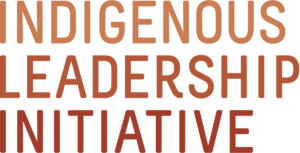Indigenous-Led Conservation in Canada: a Model for COP15
Photo credit: Pat Kane Photo
November 23, 2022
Indigenous Nations are transforming what conservation looks like in Canada. We are leading the biggest, most ambitious plans for sustaining healthy lands and communities in Canada. And now we are stepping into the global spotlight.
In December, the international community will gather in Montreal for the UN biodiversity summit, where leaders will agree on new targets for addressing the extinction crisis.
Canada has already pledged to protect 30% of lands by 2030. Indigenous-led conservation offers the most effective way to achieve that goal. It also provides a global model for how to sustain lands, respect human rights, and restore biodiversity.
Indigenous Peoples are looking for countries to match our ambition.
Eighty percent of the world’s remaining biodiversity is on lands managed by Indigenous Peoples.
When Indigenous Nations within Canada hold the pen on land-use decisions, we protect more than 60 percent of our territories, on average.
Indigenous Nations are advancing our vision for our lands, Elders, youth, and future. With greater recognition and support, we can do what Indigenous Peoples have done for millennia: step up to sustain the planet.
Indigenous Nations Lead the Creation of Protected Areas
Indigenous Nations are at the forefront of protecting lands in Canada.
About 90% of protected areas established in Canada in the last two decades have been established as a result of Indigenous partnerships or Indigenous leadership.
Many Indigenous Nations are creating Indigenous Protected and Conserved Areas (IPCA). IPCAs take many forms, but they share these common elements:
They are Indigenous-led.
They represent a long-term commitment to conservation.
They elevate Indigenous rights and responsibilities.
IPCAs reflect Indigenous laws and knowledge systems. They support Indigenous cultures and languages and foster community wellbeing. They also maintain healthy landscapes, animals and plants, and massive storehouses of carbon.
Indigenous Nations Offer Biggest Conservation Plans
Indigenous Nations have finalized three large-scale IPCAs since 2018. These IPCAs alone total over 50,000 sq km—about the size of Coast Rica.
The Łutsël K’é Dene First Nation finalized Thaidene Nëné in 2019; spanning over 10,000 square miles of boreal forest, tundra, and caribou grounds east of Yellowknife, NWT, it includes a national park and a territorial park. It is one of the largest protected areas in North America.
The Dehcho First Nations passed a Dene law in 2018 creating the Edéhzhíe Dehcho Protected Area, then finalized a partnership with Canada to also designate it as a National Wildlife Area. Edéhzhíe holds great significance for Dehcho culture and identity.
The K’asho Got’ıne northwest of Yellowknife led the protection of Ts'udé Nilįné Tuyeta as a combined IPCA and territorial park. Its rich boreal wetlands sustain waterfowl and songbirds that migrate across the hemisphere.
Momentum Is Accelerating
Scores of Indigenous Nations are in the process of creating additional IPCAs. Taken together, these proposed areas could conserve over 500,000 sq km.
Over 25 IPCA proposals were funded by the federal government and more than 20 capacity investments were made in 2019 as part of Canada’s strategy for meeting biodiversity commitments.
In northern Manitoba, for instance, four Indigenous governments have proposed protecting 50,000 sq km of the Seal River Watershed. The watershed holds 1.7 billion tonnes of carbon—equivalent to 8 years’ worth of ghg in Canada.
Prime Minister Trudeau has said repeatedly that partnerships with Indigenous Peoples are central to Canada reaching the 30x30 target.
In August 2021, Canada announced $340 million in funding to support Indigenous Protected and Conserved Areas (IPCA) and Guardians programs—its biggest investment to date in Indigenous-led conservation.
In September, 2022 Prime Minister Trudeau said: “If we don’t involve indigenous Peoples in every step of the way in protecting climate and biodiversity, we aren’t going to get there.”
Indigenous Stewardship Sustains Intact Healthy Lands
Indigenous Guardians are trained experts who manage lands and waters on behalf of their communities. They restore animals and plants, manage protected areas, and monitor and implement environmental protection plans on development projects.
The Guardians movement has more than tripled in the past five years: In 2016, there were about 30 Guardians programs. Now there are over 120 programs on the ground.
Many Guardians programs help monitor IPCAs. The Dehcho First Nations led the establishment of the Edéhzhíe Dehcho Protected Area/National Wildlife Area in 2018. Members of the Dehcho K’ehodi Guardians co-manage the site, testing water quality and monitoring woodland caribou, migratory birds, and cultural sites.


